THIS GUIDE IS SEVERELY OUTDATED USE AT YOUR OWN RISK
Hi, I'm Kreeper, and I like blowing things up, and this is a comprehensive list of stuff that helps me accomplish that and their capabilities:
AGM-114 Hellfire
The AGM-114 Hellfire is an air-to-surface missile capable of precision strikes against most targets. Capable of deployment from rotary and fixed wing aircraft. In Arma the Hellfire L, N and K II variants are available
- AGM-114K Hellfire II
- Target: All armored threats
- Range: 2,000m in Arma
-
Guidance:
- Semi-active laser homing
- Digital autopilot improvements allow target reacquisition after lost laser lock (in real life, to be tested in Arma)
- Warhead: 9 kg (20 lb) tandem shaped charge HEAT
- Length: 163 cm (64 in)
- Weight: 45.4 kg (100 lb)
- Unit cost: $65,000
- AGM-114L Longbow Hellfire
- Target: All armored threats
- Range: 2,000m in Arma
-
Guidance:
- Fire and forget millimeter wave radar seeker coupled with inertial guidance provides it with homing capability in adverse weather and in the presence of battlefield obsucurants
- Warhead: 9 kg (20 lb) tandem shaped charge High Explosive Anti Tank (HEAT)
- Length: 176 cm (69.2 in)
- Weight: 49 kg (108 lb)
- AGM-114N Hellfire II
- Target: Enclosures, ships, urban targets, air defense units
- Range: 2,000m in Arma
-
Guidance:
- Semi-active laser homing
- Warhead: Metal Augmented Charge (MAC) (Thermobaric)
- Weight: 48 kg (105 lb)
- Length: 163 cm (64 in)
Platforms:
AH-1Z Viper- K and N variants
AH-64D Apache Longbow- L and N variants (K- pending testing)
AH-6M-H- K variant
Apache AH1- K, L and N variants
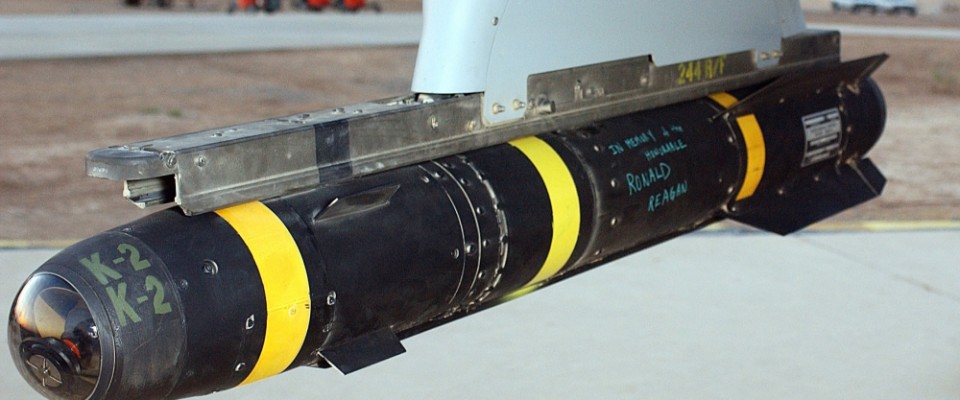
A K-series Hellfire Missile(all variants in ArmA have the K-2's texture)
AGM-65D Maverick
The AGM-65D Maverick is an air-to-surface guided missile (AGM) designed for close air support, interdiction and defense suppression. It provides stand-off capability and high probability of strike against a wide range of tactical targets, including armour, air defenses, ships, transportation equipment and fuel storage facilities.
AGM-65D Maverick
- Speed: 1,150 km/h (620 kn)
- Range: 2000m in ArmA
-
Guidance:
- Semi-active laser
- ArmA magic that is probably meant to simulate radar homing
- Warhead: 57 kg (126 lb) WDU-20/B shaped-charge
- Weight: 220 kg (485 lb)
- Length: 2.49 m (8 ft 2 in)
Platforms:
F/A-18 E/F Super Hornet
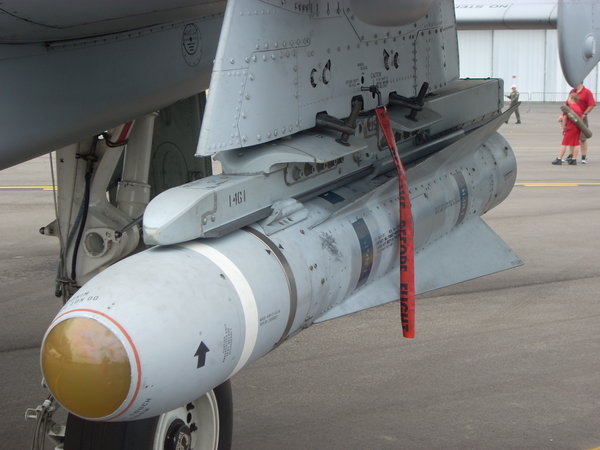
An AGM-65D mounted on an A-10 Warthog
AGM-84 Harpoon
The AGM-84 Harpoon is an all weather, over-the-horizon, anti-shipping missile system produced by McDonnell Douglas (now Boeing). Its low-level, sea-skimming cruise capability, active radar guidance and warhead design assure high survivability and effectiveness. The missile is capable of being launched from aircraft, surface ships, submarines, and shore batteries.
AGM-84 Harpoon
- Primary Function: Anti-ship missile
- Length: 3,850 m
- Guidance: Radar homing
- Diameter: 13,5 inches (34,3cm)
- Range: 2000m in ArmA
- Speed: Mach 0.85
- Warhead: 221 kilograms (487 lb), penetration high-explosive blast
Platforms:
F/A-18 E/F Super Hornet
.jpg.8ef3634ded48e6a87041f48c59d9d905.jpg)
An AGM-84 Harpoon mounted on an F/A-18C
AIM-9 Sidewinder
The AIM-9 Sidewinder is a short-range air-to-air missile developed by the United States Navy in the 1950s. Entering service in 1956, variants and upgrades remain in active service with many air forces after six decades. The Sidewinder is the most widely used missile in the West, with more than 110,000 missiles produced for the U.S. and 27 other nations, of which perhaps one percent have been used in combat.
AIM-9X
- Speed: Mach 2.5
- Range: 2000m in ArmA
-
Guidance:
- Infrared homing
- Warhead: 9.4 kg (20.8 lb) WDU-17/B Annular Blast Fragmentation
- Weight: 86 kg (191 lb)
- Length: 2.89 m ( 9.5 ft)
Platforms:
F/A-18 E/F Super Hornet
F-22 Raptor
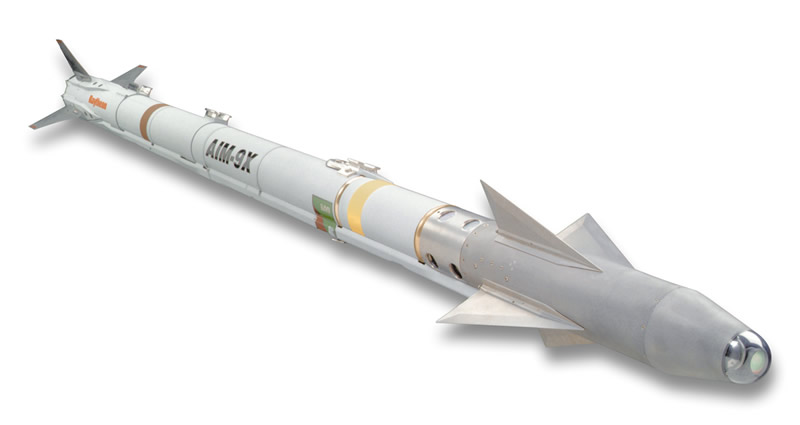
Render of an AIM-9X Sidewinder
AIM-120 AMRAAM
The AIM-120 Advanced Medium-Range Air-to-Air Missile, is a modern beyond-visual-range air-to-air active radar guided misile. The AIM-120C is the most recent and used version, entering service in 1996 and it features homing and range improvements compared to its A and B predecessors.
AIM-120 Undefined ArmA Special Edition
- Speed: Mach 4
- Range: 2000m in ArmA
-
Guidance:
- Terminal Active Radar Homing
- Warhead: 18.1 kg (40 lb) WDU-41/B High Explosive Annular Blast Fragmentation
- Weight: 152 kg (335 lb)
- Length: 3.7 m ( 12 ft)
Platforms:
F/A-18 E/F Super Hornet
F-22 Raptor
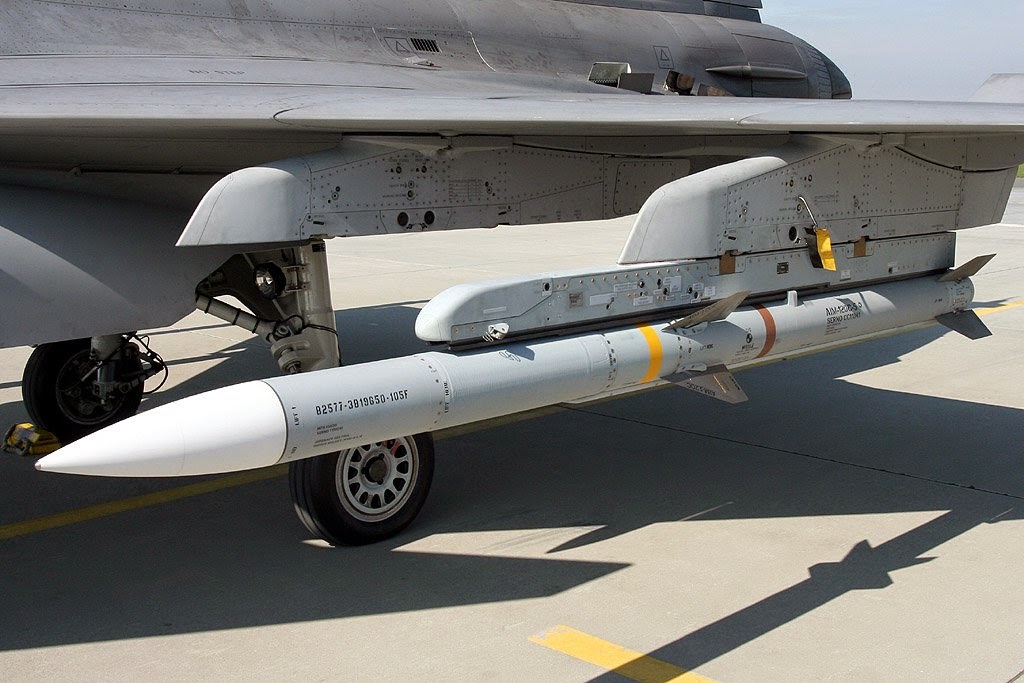
An AIM-120C-5 mounted on a Saab JAS 39 Gripen
Raytheon (Texas Instruments) Paveway I/II
Wanting to replace free fall bombs for something with the same explosive payload and employment tactics, but with better accuracy, the USAF began development of LGBs (Laser Guided Bombs). The whole concept seems now quite simple: have a laser mark and reflect off the target and fit the weapon with a seeker that guides it towards the laser signal. The first successful system of this kind was created by Texas Instruments and resulted in the first drop of an LGB in April 1965. The kits resulting from the contract given to TI were first used operationally in 1968, in Vietnam. Laser guidance increased the accuracy of the weapons by 100 fold and allowed for longer standoff range, permitting aircraft to remain further outside of anti air defense range.
The Paveway I kit consisted of a gimballed seeker mounted at the nose, a Computer Control Group and tail fins and canards. Something interesting about these tail fins is that the CCG had a simple "bang-bang" autopilot, in which the control surfaces can only be either fully deflected on not at all, resulting in a sinusoidal flight path.
The Paveway II series of kits came with several improvements over the Paveway I series, most notable of which the even simpler and cheaper CCG. In good weather conditions the, Paveway II LGBs have an accuracy of about 6m (20ft) Circular Error Probable. However the weather very much dictated the usability of the weapon, seeing as laser guidance is sub optimal in rain, fog, and other adverse atmospheric conditions. Should for any reason the guidance laser be turned of while the weapon is mid flight, guidance is completely lost. Two solutions appeared to combat the problems with the Paveway series: GPN/INS capable LGBs, known as ELGBs (Enhanced LGBs), though these didn't come until 2005, and the development of cheaper, fully GPS guided munitions in the 1990's.
what we have in ArmA are probably ELGBs to the best of my guessing ability, and the only one we have is the GBU-12, though this is technically wrong, since the correct designation for EGBU-12s is GBU-49/B
GBU-12/B (GBU49/B)
The GBU-12 series encompasses Paveway I and II LGBs with 500lb class warheads such as:
- MK 82 500lb LDGP (Low-Drag General Purpose) bomb
- BLU-111/B: Used by the navy these have a thermally insensitive explosive (PBXN-109), but are externally identical to the MK 82
GBU-12/B
- Length: 3.33 m (10 ft 11 in)
- Diameter: 27.3 cm (10.75 in)
- Fin Span: 43.2 cm (17.0 in)
- Weight: 253 kg (558 lb)
- Warhead: Mk 82 bomb

GBU-12/B, note the characteristic nose mounted seeker unit
Boeing/McDonnell Douglas JDAM (Joint Directed Attack Munition)
Finding the need for new and low-cost precision guided munitions in the early 1990's, the U.S. Navy and the U.S. Airforce were looking for production of a GPS-aided inertial guidance kit, which the USAF had recently demonstrated possible. In October 1995 McDonnell Douglas was selected for the JDAM development contract.
JDAM is an add-on kit that is installed on unguided BLUs (Bomb Live Units) and Mark 80 series bombs. The kit consists of a guidance and control section mounted at the tail of the bomb and body strakes mounted to center of the bomb body to enhance stability(with the exception of the MK 82 and BLU-11/B for rail-mount reasons; in this case they are at the nose); the tail section contains the INS (Inertial Navigation System), the GPS receiver, the control electronics, and 4 tail fins (three moving, one fixed) to steer the munitions.
With full GPS-aided INS guidance, the official accuracy of JDAM is 13 m Circular Error Probable, with supposedly better real figures at 9.6 m CEP. In ArmA, from personal experience, it's about 1 meter with a tendency to hit low relative to the laser target.
In truth what we get in ArmA are LJDAMs (Laser JDAM), due to their ability to use terminal laser seeking; these were only produced from 2007 on and there we only 600 of them made initially.
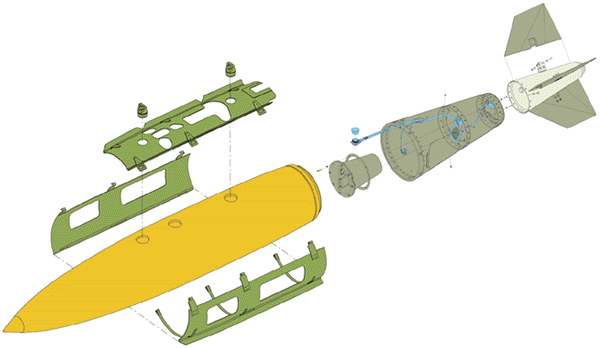
GBU Kit Assembly
GBU-38/B
The designation GBU-38/B was given to a 500lb class JDAM bombs, with Boeing produced kits. Two types "base" warheads can fitted with the JDAM package:
- The MK 82 500lb LDGP bomb
- The BLU-111/B and BLU-126/B which are basically the same thing. Both use PBXN-109.
GBU-38/B
- Length: 2.353 m (92.64 in)
- Diameter: 27.3 cm (10.75 in)
- Fin Span: 43.2 cm (17.0 in)
- Weight: 253 kg (558 lb)
- Warhead: Mk 82 bomb
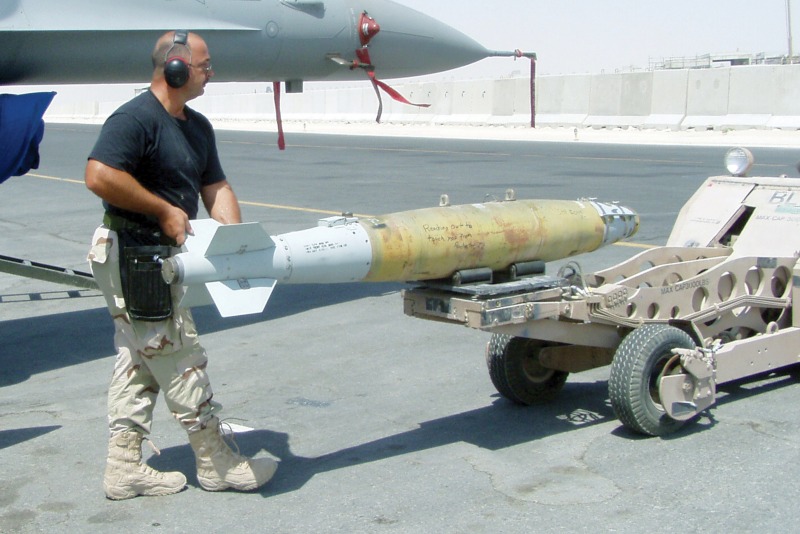
GBU-38/B, note the nose mounted strakes
GBU-32/B
The designation GBU-32/B was allocated early in the JDAM program to 1000 lb class JDAM bombs with guidance kits from McDonnel Douglas (now part of Boeing). As with the GBU-38 two types of warheads can be used with JDAM kits for the GBU-32:
- The MK 83 1000lb LGDP bomb
- The BLU-110/B 1000lb PBXN-109 bomb
The ones we use in ArmA have the MK 83 warhead.
GBU-32/B
- Length: 3.035 m (119.49 in)
- Diameter: 35.6 cm (14 in)
- Fin Span: 49.8 cm (19.62 in)
- Weight: 468 kg (1031 lb)
- Warhead: Mk 83 bomb

GBU-32/B
GBU-31/B
The designation GBU-31/B was given to 2000lb class bombs with kits from McDonnell Douglas. Four different types of warhead have found use with the 2000lb JDAM guidance kits:
- MK 84 2000lb LDGP
- BLU-109/B 2000lb penetrator warhead
- BLU-117A/B 2000lb PBXN-109 bomb
- BLU-119/B blast/fragmentation warhead made to destroy biological/chemical targets without contamination
GBU-31/B
- Length: 3.879 m (152.72 in)
- Diameter: 46 cm (18 in)
- Fin Span: 64.3 cm (25.32 in) )
- Weight: 946 kg (2085 lb)
- Warhead: MK 84 bomb or BLU-117/B
3.jpg.4200f9573d09a7ece427b5a5946a0443.jpg)
GBU-31/B, note it's really fucking big
Brevity Codes for munitions
Brevity codes are words that carry a certain special meaning when transmitted over the net. In this context we have procedure words for munitions release such as:
- Fox One: Signals release of Semi-Active Radar Guided missile, such as the AIM-7 sparrow
- Fox two: Signals release of infrared guided missile, such as the AIM-9X
- Fox Three: Signals release of Active Radar Guided missile, such as the Aim-120AMRAAM
- Guns, Guns, Guns: Indicates air-to-air or air-to-surface cannon fire
- Rifle: Signals release of an air-to-ground missile such as the AGM-65 Maverick or the AGM-114 Hellfire
- Pickle: Indicates release of bombs on a target
- Ripple: Indicates release of multiple munitions in quick succession, usually bombs
Edited by Kreeper


